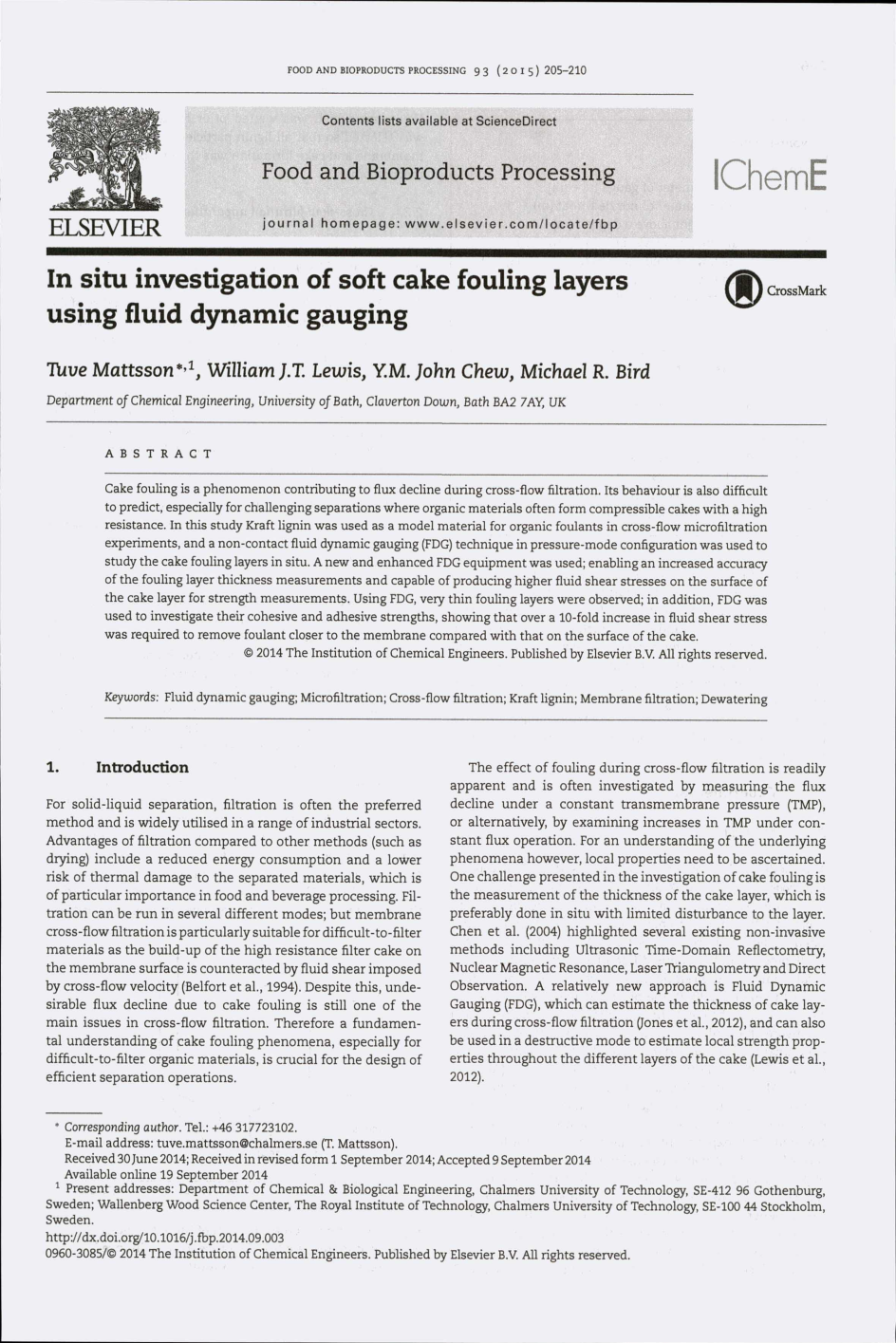| Article ID | Journal | Published Year | Pages | File Type |
|---|---|---|---|---|
| 6488552 | Food and Bioproducts Processing | 2015 | 7 Pages |
Abstract
Cake fouling is a phenomenon contributing to flux decline during cross-flow filtration. Its behaviour is also difficult to predict, especially for challenging separations where organic materials often form compressible cakes with a high resistance. In this study Kraft lignin was used as a model material for organic foulants in cross-flow microfiltration experiments, and a non-contact fluid dynamic gauging (FDG) technique in pressure-mode configuration was used to study the cake fouling layers in situ. A new and enhanced FDG equipment was used; enabling an increased accuracy of the fouling layer thickness measurements and capable of producing higher fluid shear stresses on the surface of the cake layer for strength measurements. Using FDG, very thin fouling layers were observed; in addition, FDG was used to investigate their cohesive and adhesive strengths, showing that over a 10-fold increase in fluid shear stress was required to remove foulant closer to the membrane compared with that on the surface of the cake.
Keywords
Related Topics
Physical Sciences and Engineering
Chemical Engineering
Bioengineering
Authors
Tuve Mattsson, William J.T. Lewis, Y.M. John Chew, Michael R. Bird,
